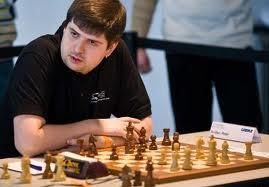
Initiative in Endgames, The End
With this article we finish the series on Initiative in the Endgame. The following selection of endgame positions is from the recent European Club Cup.
The first position is a good example of when to give up extra material to achieve a draw. Black is up a pawn but it is white who has the initiative due to the far-advanced b7-pawn. Moreover, white has a direct threat of Rc6+, winning the Ba6. The bishop cannot move because then Rc8 would happen and the pawn would promote. Black has several defensive possibilities but they all come down to the same idea: give up the bishop but capture the b7 and f5-pawns. If black leaves one white pawn on the board - which is what happened in the game it would be an easy win for white. Even if white manages to capture all black pawns R+B vs. R should be still a draw (you have to remember the defense along the 7th-rank).
The next example probably belongs to the category of psychology. I just do not see another reason besides psychological pressure or time trouble for not winning this overwhelmingly winning position. The black player is about 150 rating points lower than Kurajica and playing a higher-rated player can be intimidating. In this position black's only natural plan is to push the passed pawn forward. The knight on a2 is ideally placed to support the c-pawn promoting. Black's king is active, so he can move it forward, chasing the c5-knight away and thus securing the b3-square for the bishop. The bishop is needed on b3 to help the pawn promote. This series of positional nuances can be seen by a player of 2400 strength in a couple of seconds. Black ended up playing timidly, not capitalizing on the initiative he had and eventually the game withered into a draw.
The following position is geometrically interesting. From the first sight one may conclude that the position is close to equal: black has an exchange but white has a strong d-pawn as compensation. However, if you look closer at the position you might notice a few tactical ideas. First, the king on h1 is extremely badly placed - any check from the first-rank can be fatal. Secondly, the knight on a3 is completely cut off from the game by the d3-bishop, one should only attack it and the knight will have nowhere to go. And finally, there is a beautiful combination connected to idea of d6-Bd5+ and Rh8 checkmate. Svidler's position is objectively winning and here he had to come up with the right solution. Instead, he went after a quiet but complicated combination where white found enough resources for a draw.
In the Avrukh - Motylev endgame white is up a piece for three pawns. The pawns are far advanced, which means that white should be careful. It is easier to play this position for black because it is black who has the initiative now. He wants to promote one of the pawns on the kingside and white has to come up with a complex solution to prevent it. For example, one of the defensive lines starts with Bh2. Why Bh2? White wants to push the passed e-pawn forward but not block the diagonal for the bishop. Also Bh2 will prevent g3-h3 ideas. The other defensive idea is to take the c3-pawn with the king and give up the bishop for the pawns on the kingside and play an endgame with N+2p vs. B+3p., which should be a draw. Avrukh decided to give up the f2-pawn, which made his defense even harder.
With the series "Initiative in Endgames" we analyzed modern endgames and tried to determine how to develop an initiative in the endgame and how to defend against it. In the initial articles the positions were clear and critical positions were evident where one side did not capitalize on their initiative and the other side managed to capture it. As we moved forward the games became more complex and these transition moments were harder to spot. We looked mostly at modern games because the initiative is highly valued in today's tournament play. After studying this series you will be sharper in the endgame stage, be able to construct clear plans and improve your overall endgame assessment.






